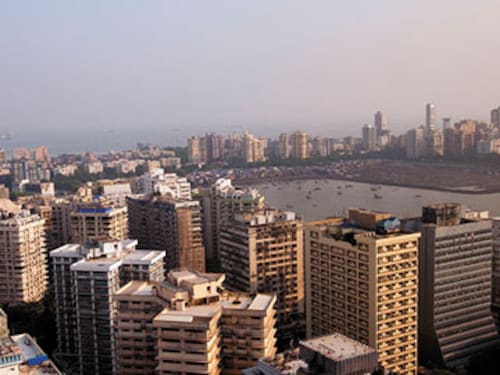Making Mumbai future-ready
For this, we need to go beyond 'basic living standards' to 'enhanced lifestyles' for its residents


It makes me wonder: Does it have to be a ‘number-crunching, data-specific’ statement of intent? Why not instead focus on the larger goal: A better life, which spells ‘happiness’ for Mumbai’s residents?
I look upon the Development Plan 2034 as a road map for the future of Mumbai and its residents. Obviously, I expect it to be a ‘vision document’ to be ‘future ready’ and in sync with the lifestyle choices of Mumbai’s residents, to have the far-sightedness to spot and plan for shifting societal trends. The ‘vision document’ must be propelled by the drive to change the expectations and lifestyle of people, to change the skyline of the city, effectively ushering in an era marked by higher standards of living and global lifestyles.
Viewed from this perspective, this is my ‘wish list’ I would want these points to be included in the vision document: How do we enhance the quality of life for Mumbai’s residents, and make the city, truly, the ‘Urbs Prima Indies’?
To begin with, basic necessities for a future-ready Mumbai need to be provided for, be it sufficient drinking water, solid waste disposal or enhanced connectivity. Then, we need to go beyond that, from ‘basic living standards’ to ‘enhanced lifestyles’. Or, as I prefer to term it, ‘raising global lifestyles’.
Mumbai needs to be an eco-friendly city, and I would like the vision document to provide for enhanced green cover. And it needs to be done beyond the concept of a patch of lawn with shrubs and bushes, what the MCGM (Municipal Corporation of Greater Mumbai) calls a ‘garden’. Why not take a leaf from global cities and create a canal with green spaces of about 100 acres on both sides at Backbay? Then, this patch between Nariman Point and Cuffe Parade would bring a global look and feel to SoBo—the canal will create a water body all the way till Badhwar Park, for instance, while ensuring that development remains environmentally friendly and verdant green.
Similarly, the proposed west coast road from Nariman Point to Kandivali can have beautiful gardens of about 500 acres in the space between the proposed road and the existing shoreline. In the central suburbs, we have patches where mangrove forests of around 500 acres can be created, ensuring protection for ecology while creating eco-friendly green spaces. Moving on to the next point in my ‘wish list’: Iconic structures that would reflect the ‘Spirit of Mumbai’.
Mumbai needs high-rise structures with a glass and chrome façade, on par with New York’s Empire State Building or the Burj Khalifa in Dubai. And, not just one: The vision document should make it easy to conceive, plan and create such iconic structures that soar to the sky, to ensure that the city’s architects get to express their creativity in flowing works of architecture, which create icons to dot Mumbai’s skyline.
From iconic structures to low-cost housing—the vision document should create a scenario so that Mumbai can successfully meet the challenge of creating one million houses for the common man by utilising the large swathes of salt pan land which is around 2,000 acres. The fact is that the salt pans were created to run the industry of salt making it was something that simple. Now, this can be put to a far better use, and by creating mass housing for the common man, it solves one of Mumbai’s most pressing problems.
From low-cost housing to another problem that needs a ‘quick-fix’–slums. Fifty percent of Mumbai’s population dwells in slums. The vision document needs to provide ways and means to expedite and fast-track policies such as SRA (Slum Rehabilitation Authority) to bring in better quality of life and living standards.
Radical steps need to be put forward in order to improve the housing scenario in Mumbai, and this needs to be done at the maximum efficiency level.
Entertainment is one industry that thrives in Mumbai, and the vision document needs to factor in ‘creative spaces’ which are self-sustaining from the economic point of view. From art galleries and culture centres to television and movie studios. I am sure Bollywood can give the city something similar to Universal Studios in Orlando (in the US) or Singapore. The entertainment industry generates jobs gives a fillip to economic growth–the vision document should ensure that this industry remains within Mumbai also ensure its growth and can make it a tourist attraction too.
The vision document needs to support tourism zones–amusement parks, hotels, convention centres and resorts in locations like Manori-Gorai, or Bhandup-Mulund. On similar lines, the vision document should also demarcate spaces for 24-hour entertainment zones away from residential areas.
Considering that in Mumbai, the IT and ITES industry works 24/7 I am sure the vision document can provide ‘entertainment zones’ with a similar ‘work and grow’ option.
The vision document for Mumbai needs to go beyond basic necessities and include lifestyle options. It needs affordable housing and also iconic structures. Entertainment zones will not be just about business, with the potential for enjoyment and fun, but also about job creation. For Mumbai’s future, ‘sustainable development’ takes on a whole new meaning, and the vision document should reflect this in entirety.
The goals of the vision document need to be powered by newer technologies, bold design and precision engineering, to create a future-ready Mumbai, a city whose success should come from its citizens. Every aspect of the vision document—be it about real estate, education, health care, hospitality, leisure, entertainment or any other topic—should focus on creating a better experience in every aspect of the Mumbai way of living. I would like the vision document to focus on quality, commitment towards the city’s residents, reliability in terms of basic needs and excellence in terms of the living experience it offers.
First Published: May 07, 2015, 07:41
Subscribe Now